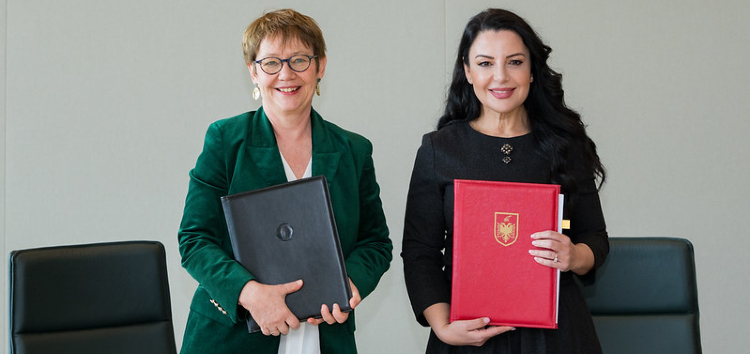 The European Bank for Reconstruction and Development (EBRD) awarded Albania’s state-owned railway company, Hekurudha Shqiptare, a EUR 98.75 million sovereign loan for the rehabilitation and electrification of the Vore-Hani i Hotit railway line.
The European Bank for Reconstruction and Development (EBRD) awarded Albania’s state-owned railway company, Hekurudha Shqiptare, a EUR 98.75 million sovereign loan for the rehabilitation and electrification of the Vore-Hani i Hotit railway line.
The loan has been signed by the EBRD President Odile Renaud-Basso and Albania’s Deputy Prime Minister and Minister of Infrastructure and Energy Belinda Balluku signed the loan agreement at the sidelines of the Western Balkans Investment Summit 2024, held in London on 26 February 2024.
“The Vore-Hani i Hotit railway line marks the second rail infrastructure project in Albania, part of a national strategy to enhance the quality and accessibility of rail services throughout the country, while fostering connectivity and economic relations with neighbouring countries – in this case, with Montenegro, to be followed by the first rail segment of Corridor VIII that connects the Adriatic Sea to the Black Sea,” Albania’s Deputy Prime Minister said.
The Bank is leading on a project worth EUR 373 million, co-financed by the European Investment Bank (EIB) and the European Union (EU) through the Western Balkans Investment Framework (WBIF), which is providing EUR 128.8 million in grants and technical assistance support of up to EUR 12.1 million. The total cost of the project is estimated at EUR 415 million.
The 120 km long Vore-Hani i Hotit railway line connects Vore in central Albania to Hani i Hotit on the border with Montenegro, boosting regional connectivity in the Western Balkans and integration with EU markets. Part of the Trans-European Transport Network (TEN-T) extension in the region, this line is Albania’s only railway connection with its neighbouring countries.
The rehabilitation of the line includes the reconstruction of 12 stations, the installation of a new telecommunication and signalling system and safety improvements and will allow trains to run at a speed of 120 km/h. The project helps Albania’s social and economic development and boosts the green transition by promoting a modal shift from road to electrified rail, a more efficient and climate-friendly mode of transport.
Share on:



